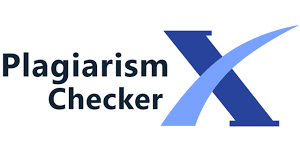Orthostatic strategies for the variation and improvement of the gait pattern according to the application of the Fall Proof program combined with the Propioceptive Neuromuscular Facilitation for the frail elderly
DOI:
https://doi.org/10.52428/20756208.v13i33.498Keywords:
Fragility síndrome, Elderly, Sarcopenia, Gravity in elderlyAbstract
As physical deterioration progresses, many bodily skills are lost, mainly changes in positions and displacements due mainly to postural equilibrium, which results in a serious functional alteration for the life of the older adult. This deficiency in postural equilibrium and mobility is due to a decrease in sensory and motor capacities, meaning a decrease in the integration of information and the execution of motor activities, therefore, there is a greater susceptibility to suffering from muscularskeletal pathologies. Because of this decrease, the older adult is more exposed to falling episodes, which often have serious physical, psychic, social and economic consequences that affect both the patient and his family and society.
A descriptive, analytical, and longitudinal study was conducted in 70 older adults where 7 % were found with Iow risk of fall, 14 % with a high risk offall and 79 % with a very high risk of fall on the application of the program FallProof in combination with the neuromuscular facilitación proprioceptive to enhance the center of gravity, voluntary orthostatic strategies, involuntary strategies, and gait. The result was optimal since to the final evaluation we have a 71 % with Iow risk of fall, 22 % with high risk of fall and 7 % with very high risk of fall.
This intervention by being individualized proposes an orthostatic strategy and a variation in the gait due to the improvement of the postural equilibrium control, the deficits in the vestibular, somatosensory, and visual system in addition to the muscular-skeletal system and nerve conduction thus reducing the incidence of falls during the execution of basic daily activities (like getting out of a chair or climbing stairs), since the balance constitutes the basis of an active and healthy life.
Downloads
References
SOCIEDAD ANDALUZA DE GERIATRÍA Y GERONTOLOGíA. Caídas en el anciano. Malaga, España: Ed. Panamericana, 2004; 2(3).
SOCIEDAD ESPAÑOLA DE GERIATRÍA Y GERONTOLOGÍA. Tratado de Geriatría para Residentes. Madrid, España: Editorial International Marketing & Communication, S.A. (IM&C); 2006
CLÍNICAS MÉDICAS DE NORTEAMÉRICA. Geriatría medica N o 90, New York, EE. UU.: Editorial Eiservier Saunders; 2006.
SALOM J y CASTELLS P. Trastornos del Equilibrio en Ancianos. Valencia, España: Hospital Universitario Dr. Peset; 2005.
CALANDRE L, CONDE I y BERMEJO F. Trastornos del equilibrio y de la marcha en el anciano: análisis clínico de una serie de 259 casos mayores de 70 años. Madrid, España: Revista de Neurología. 2005; 20.
ADLER S, BECKERS D y BUCK M. FNP In Practice. Berlin, Alemania: Editorial Springer•, 2008.
DEBRA R. Fall Proof a comprehensive balance and mobility training program. 2da Ed. California, Estados Unidos: Editorial Human Kinetics; 2010.

Downloads
Published
How to Cite
Issue
Section
License
Copyright (c) 2018 Enrique Gary Jiménez Vignola , Aydee Romero Molina , Sofia Angelica Ruiz Mendieta y Bismark Fuentes Cayo

This work is licensed under a Creative Commons Attribution 4.0 International License.
Authors who publish with this journal agree to the following terms:
- Authors retain copyright and grant the journal right of first publication with the work simultaneously licensed under a Creative Commons Attribution License 4.0 that allows others to share the work with an acknowledgement of the work's authorship and initial publication in this journal.
- Authors are able to enter into separate, additional contractual arrangements for the non-exclusive distribution of the journal's published version of the work (e.g., post it to an institutional repository or publish it in a book), with an acknowledgement of its initial publication in this journal.
- Authors are permitted and encouraged to post their work online (e.g., in institutional repositories or on their website) prior to and during the submission process, as it can lead to productive exchanges, as well as earlier and greater citation of published work.






















